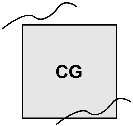|
5.A.xi. Antarctic Digital Database
       * *  Primary reference citation for this source Primary reference citation for this source
       ** ** Reference citation noting repairs to data from this source Reference citation noting repairs to data from this source
The Antarctic Digital Database (ADD) was produced under the auspices of the Scientific Committee on Antarctic Research (SCAR). This project compiled topographic contour maps from eleven nations into one collection. ADD vector data were compiled from maps ranging in scale from 1:200,000 to 1:5,000,000. The detail, density, and interval of the contours in ADD vary widely, with the more detailed data near the coastline and very generalized data in the interior of the continent. The coastline was updated using 1:1,000,000-scale satellite images. Detailed documentation and metadata provided in ADD identifies the map scale from which each contour line was extracted. The data base is available on CD-ROM. Digital contours and coastlines from ADD were used as source material for Antarctica. They were converted to DEMs at USGS, using contour-to-grid techniques. That procedure is described in Section 5.A.vii. GLOBE quality control detected edge-effect errors in the USGS adaptation of ADD. The westernmost column bordering on 180oW longitude, easternmost two columns, and southernmost row bordering on the South Pole contained nominal flag values instead of actual elevations. These errors were corrected by NGDC for GLOBE.
There are several DEMs and spot elevation data sets derived from satellite altimetry for Antarctica. Several of these are being evaluated for future versions of GLOBE.
|
| All Bathy/Relief | Coastal DEMs | Fishing | Global | Lakes | Multibeam | NOS |



